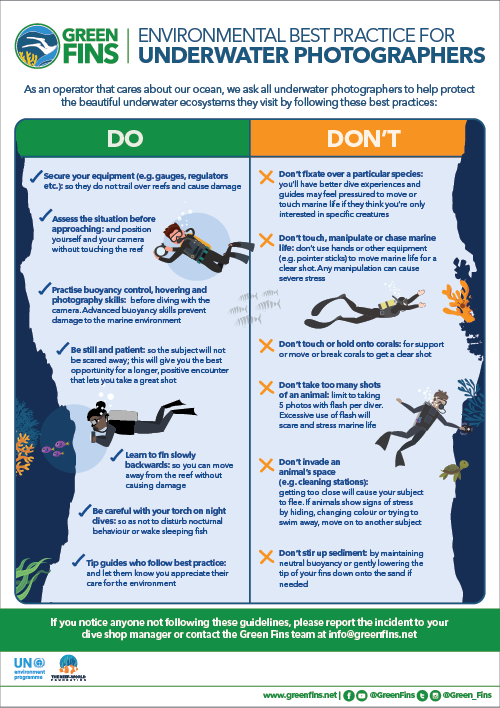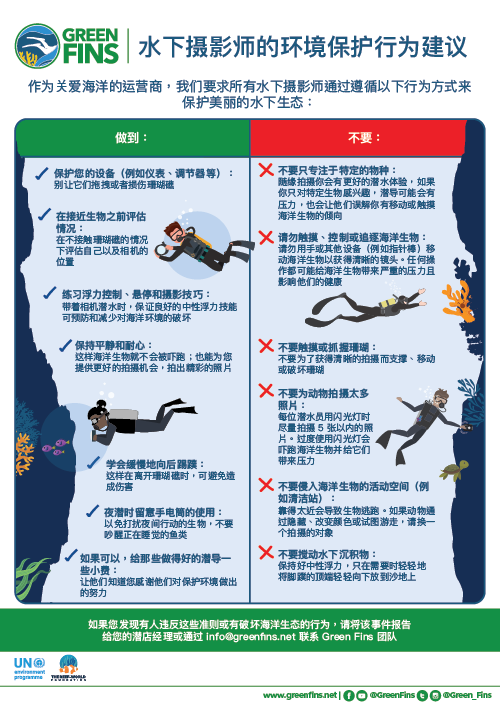Underwater photography is a mighty tool in the marine conservation world. As Sir David Attenborough once said: “No one will protect what they don’t care about, and no one will care about what they have never experienced.” Underwater photography reminds us that there is a world of incredible biodiversity below the surface. A world that deserves our protection.
Every time we dive, we become visitors in a foreign land. And like any tourist visiting a new destination, it’s important to respect the locals and the environment that they call home. This is especially true if you’re an underwater photographer.
Why should underwater photographers follow best environmental practice?
Did you know that underwater photographers are more likely to damage the reef than divers without equipment? Research has found that this often happens when photographers try to get too close to the reef or attempt to steady themselves for the perfect picture.
As an underwater photographer, you have the tool to educate and inspire others to be environmental ambassadors for our ocean. So before you take your camera gear underwater, it’s important that you understand and follow the best practice guidelines. Adhering to these tips will help you become a more skilled underwater photographer and more importantly — to ensure your actions don’t harm the marine environment.
Environmental best practice for underwater photographers
DO:
Secure your equipment (e.g. gauges, regulators etc):
This includes gauges, regulators and any other loose equipment or straps that could cause damage by trailing along the reef. It’s important that you tuck your equipment away securely before your dive and be mindful of anything coming loose while you’re in the water.

Assess the situation before approaching:
It might be tempting to hone straight in on that colourful creature or amazing coral but before you swim towards your subject, assess the situation first. Can you position yourself and your camera without touching the reef?
Practice buoyancy control, hovering and photography skills:
Mastering buoyancy control can be tricky at the best of times but is even more of a challenge when you’re swimming with bulky equipment. Advanced buoyancy skills prevent damage to the marine environment. So, be sure to practice in a pool with your camera beforehand. Be still and patient:
When you’re practising underwater photography, patience really pays off! By staying still and waiting calmly, the subject will be less likely to swim (or scuttle) away. This will give you the best opportunity for a longer, positive encounter and a great shot.
Learn to fin slowly backwards:
This is a useful skill for underwater photographers to learn. By learning to fin slowly backwards, you can move away from the reef in a steady movement without causing damage.
Be careful with your torch on night dives:
You wouldn’t like it if someone wakes you up from your sleep by shining a bright light at you. Same for the sleeping fish! Be aware of where you shine your torch during the night dive. Make sure you are not disturbing any nocturnal behaviour or waking any sleep fish.
Tip guides who follow best practice:
Some guides with your best interest at heart may manipulate marine life in order for you to get that perfect shot. But this kind of interference with nature can cause stress to the wildlife and disrupt natural behaviours. Tipping guides who follow environmental best practices lets them know you appreciate their care for the environment. It’s also a positive gesture that reinforces responsible behaviour.
DON’T:
Don’t fixate over a particular species:
Guides may feel pressured to move and manipulate marine life if they think you will only tip for specific creatures. Go with the flow and you’ll have a better and more enjoyable dive experience!
Don’t touch, manipulate or chase marine life:
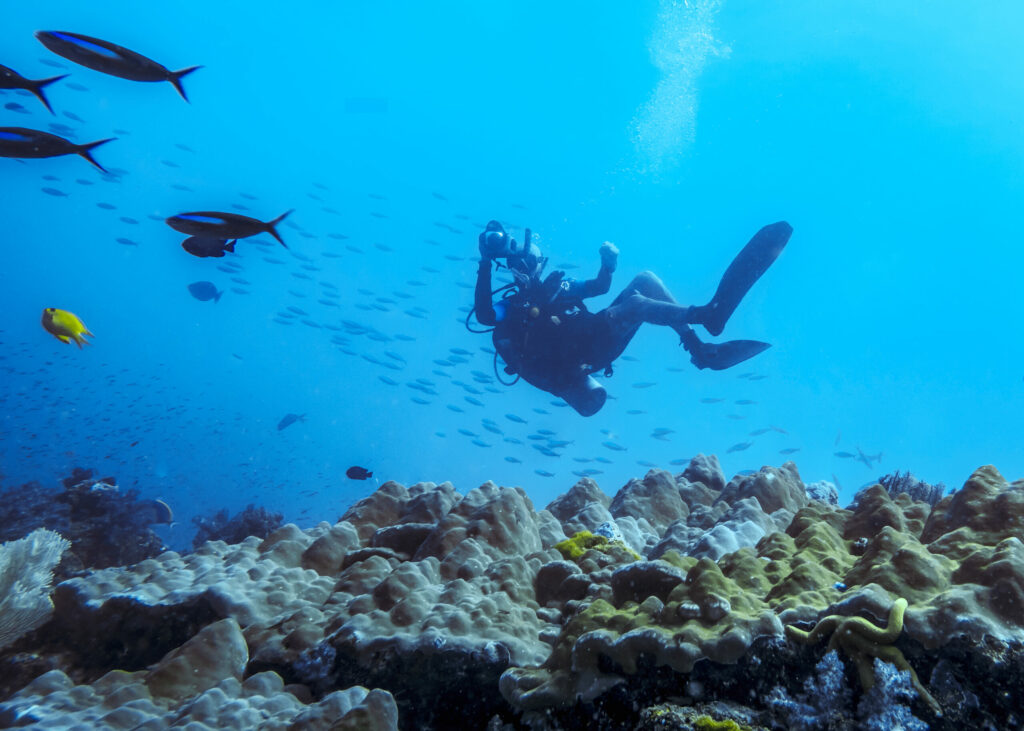
Using hands or other equipment such as pointer sticks to move marine life for a clear shot can stress them and make them defensive or aggressive. Interfering in this way can also affect their long-term health which could have a knock-on effect on the balance of the ecosystem over time.
And be sure to share feedback in your post-dive debrief with any guides who manipulate marine life during the dive. Let them know you prefer seeing the animals the way they are. Also, you do not appreciate the disturbance caused towards the animals.
Don’t touch or hold onto corals:
Underwater photographers will sometimes be tempted to touch or hold on to corals to get more support. In some cases, they may even move or break corals to get a clear shot of their subject. This can spell disaster for some species which may never recover from the damage.
Don’t take too many shots of an animal:
Excessive use of flash or strobe lighting can cause stress to marine life. Always keep flash photography to a minimum. Limit to taking 5 photos with flash per diver and use ambient lighting where possible.
Don’t invade the animal’s space (e.g. cleaning stations):
Getting too close will cause your subject to flee. If animals show signs of stress by hiding, changing colour or trying to swim away, take that as a sign to move onto another subject.
Don’t stir up sediment:
Increased sedimentation will not only create poor visibility (and who needs that?) but it can also threaten the health of the reef by smothering the corals. To avoid this, always try to maintain neutral buoyancy or gently lower the tips of your fins onto the sand if needed.
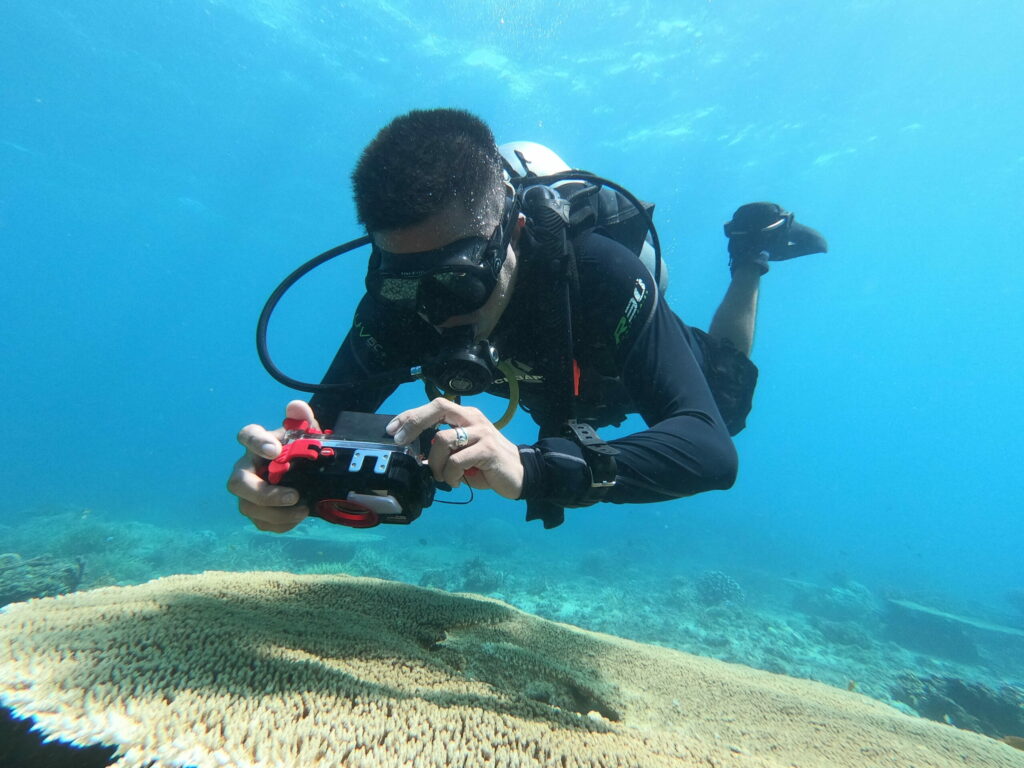
Be aware of your behaviour underwater
Most underwater photographers don’t intend to cause harm or stress to the marine life they encounter. But being a responsible underwater photographer is about being aware of your own behaviour and your impact on the marine environment you’re visiting.
By keeping in mind these environmental best practices, you’ll be on track to becoming a better and more responsible underwater photographer. Your behaviour can inspire others to protect our ocean.

